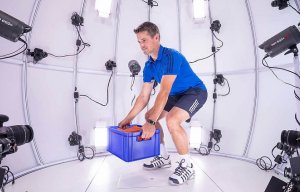
Hohenstein launches series of 4D scanning projects
Hohenstein scientists spent about two years measuring the heads of 6,000 men, women, and children to help guide improved helmet design across many markets.

8th June 2015
Innovation in Textiles
|
Boennigheim
Head size and shape directly influence helmet fit, which in turn affects functionality, comfort, and user compliance, according to the Hohenstein Institute.
Results from the Institute’s 3D head measurement research study have led to new fit data and evaluation methods that will help guide improved helmet design across many markets.
Hohenstein’s Dr Jan Beringer will review the study and its implications in a free webinar on Wednesday, 17 June at 12:00 EST.
“One-size-fits-all is definitely not a good approach to helmet design, especially for situations with the significant threat of head injury such as sports and industrial workplaces,” explained Dr Beringer, who heads the research group of Hohenstein’s Department Function and Care.
“Using Hohenstein’s proprietary 3D head measurement methods, we have identified statistically typical head shapes and sizes to help guide protective head gear design for improved product performance and user compliance.”
Hohenstein scientists spent about two years measuring the heads of 6,000 men, women, and children. Heads were evaluated on 40 defined points including circumference, width, length, and other important dimensions.
The researchers evaluated the extensive body of data and identified five representative head morphotypes. They also constructed new size charts based on the statistical distribution of these head types in the population.
With their extensive expertise, new sizing data, and state-of-the-art 3D measuring technology, Hohenstein scientist can work with head gear manufacturers to develop the most effective design and sizing approach and confirm that products fit as desired. In addition to head measurements, the study also documented other dimensional fit factors, such as the spatial relationships between eyes, noses, ears, and mouths to support the design of other protective gear like goggles and mouth guards.
Hohenstein conducts 3D head study to help helmet manufacturers

Business intelligence for the fibre, textiles and apparel industries: technologies, innovations, markets, investments, trade policy, sourcing, strategy...
Find out more